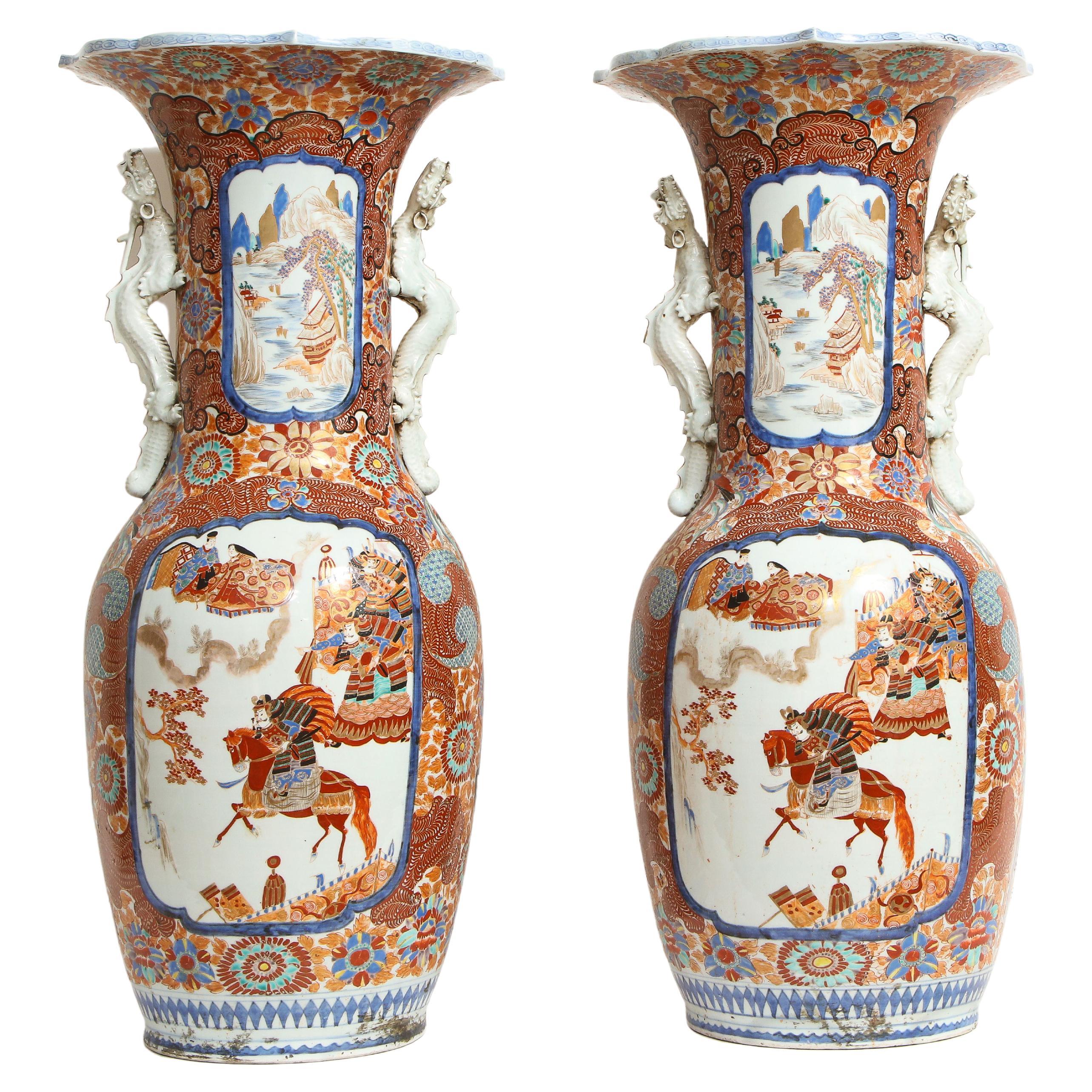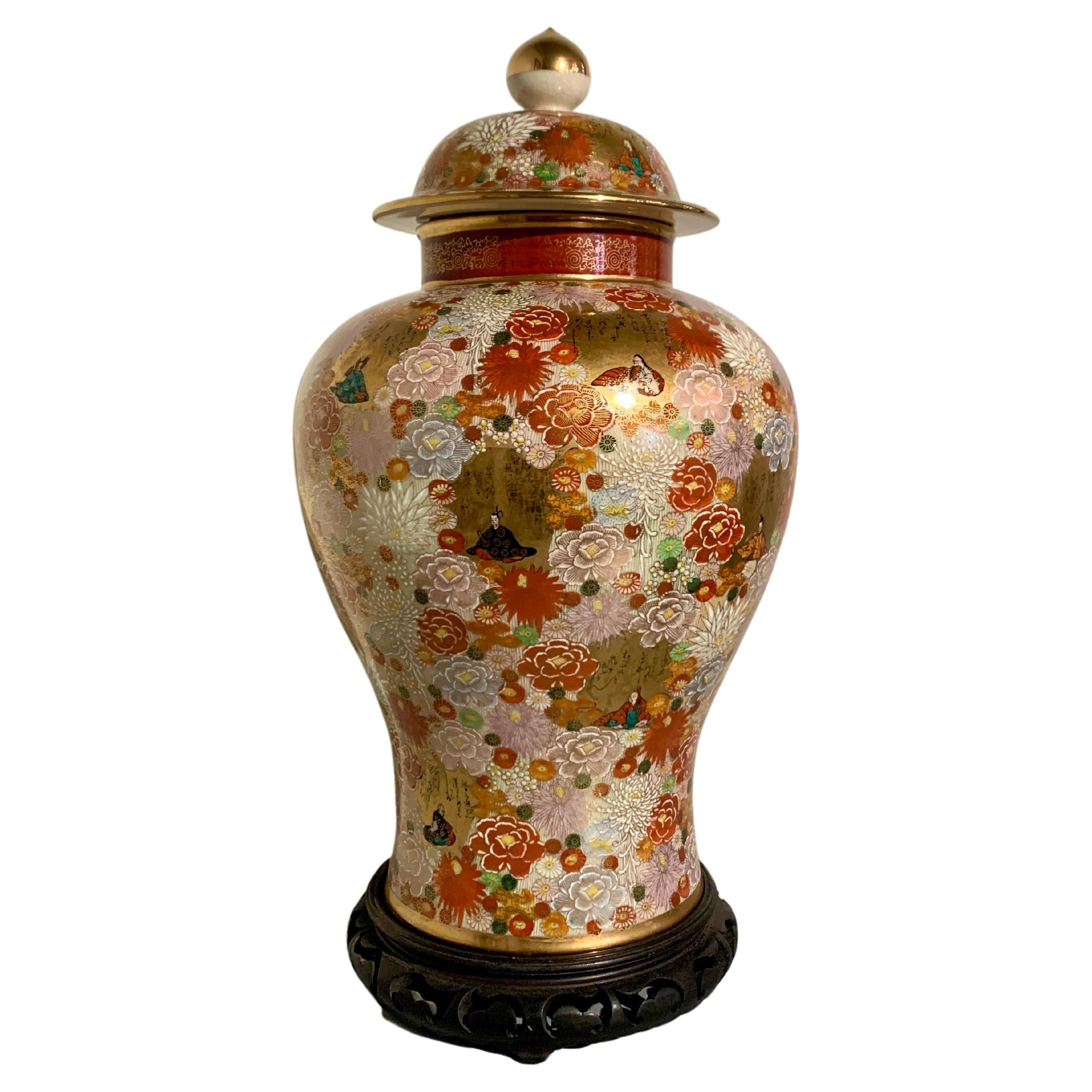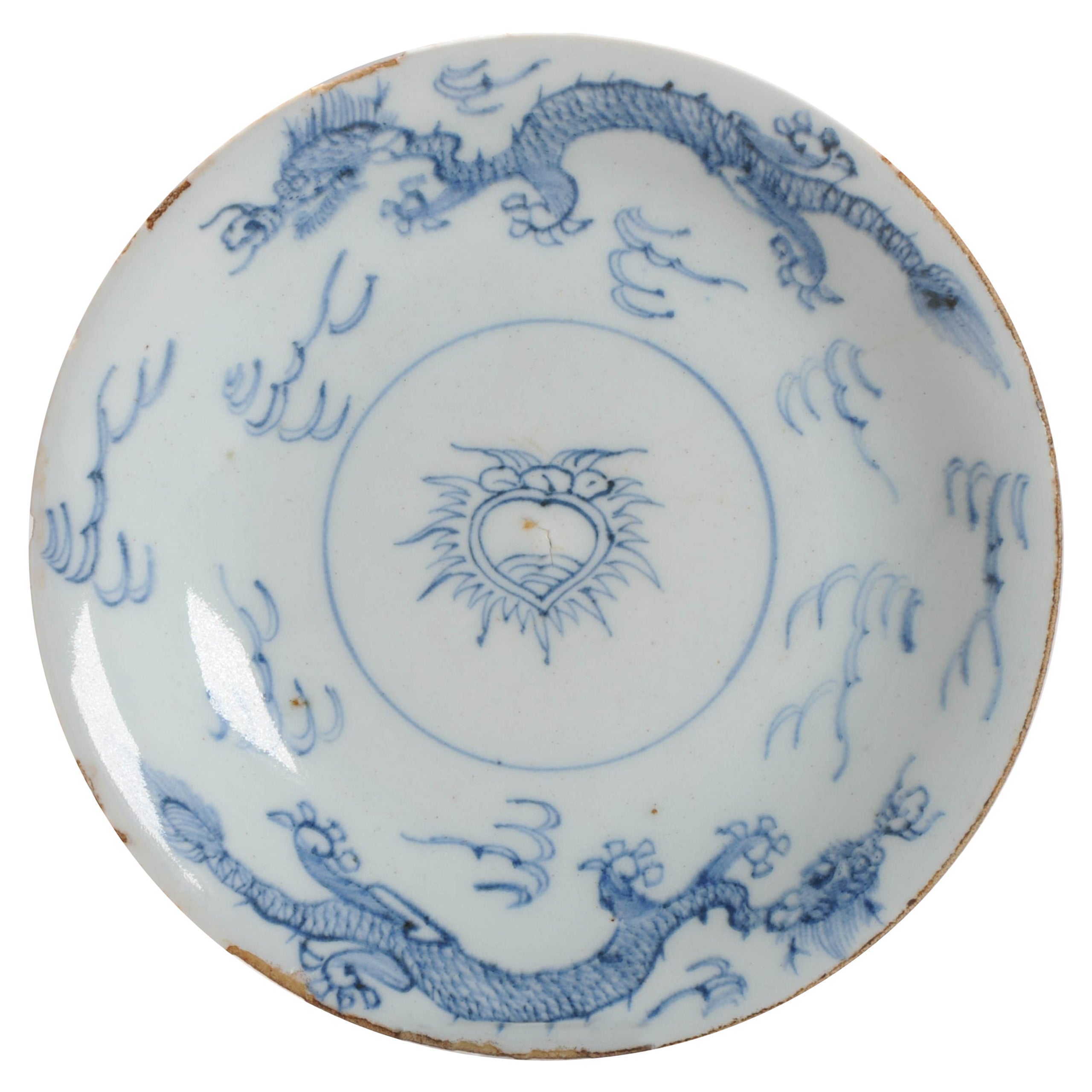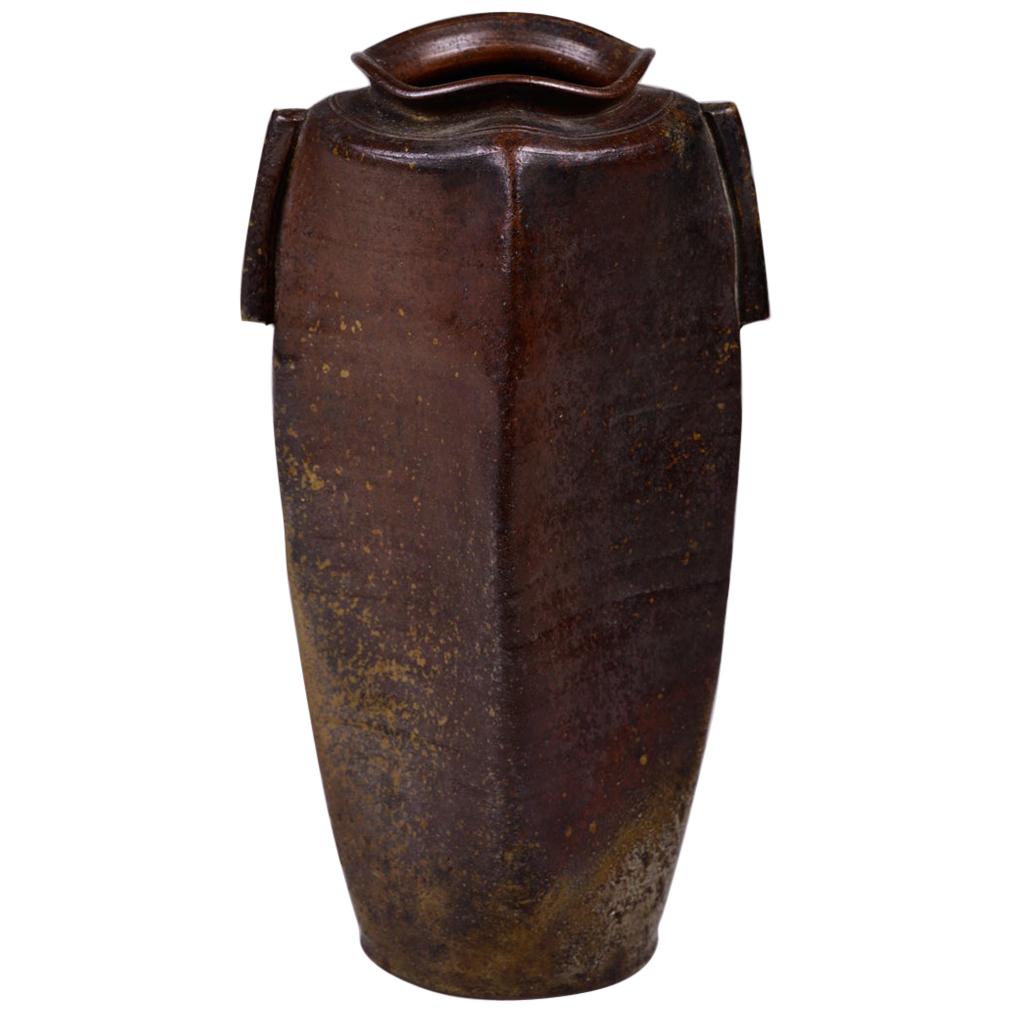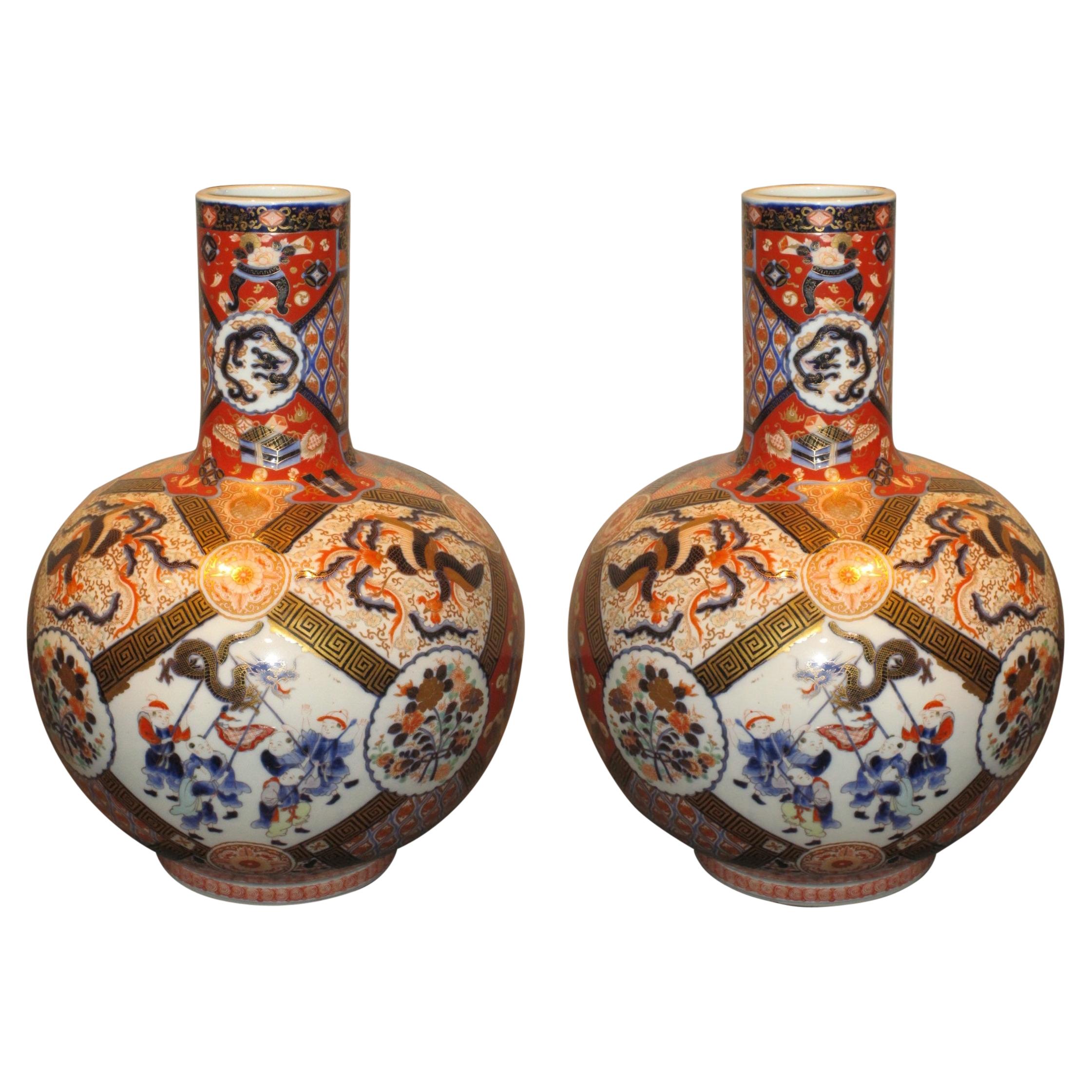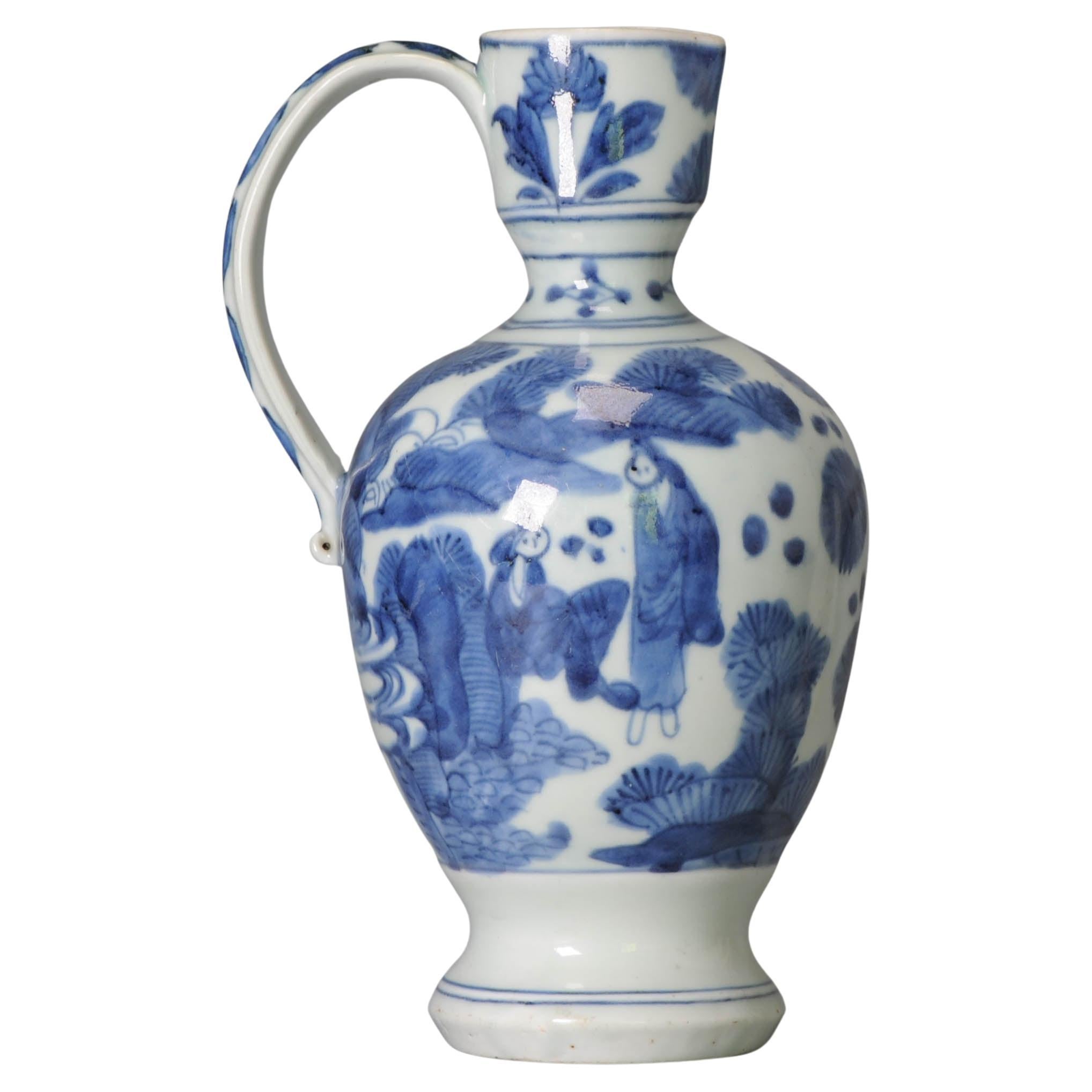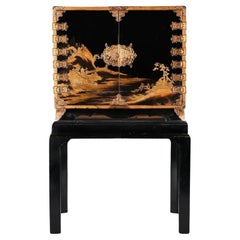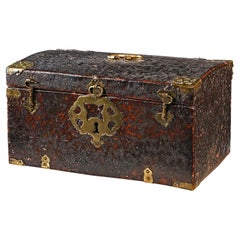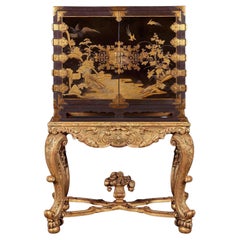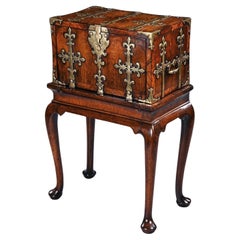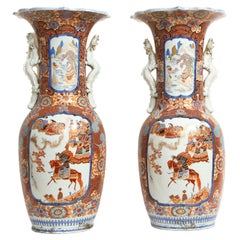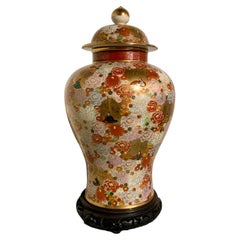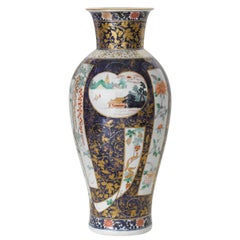
Pair of Late 17th Century Edo Period Japanese Arita Imari Vases and Covers
View Similar Items
Want more images or videos?
Request additional images or videos from the seller
1 of 7
Pair of Late 17th Century Edo Period Japanese Arita Imari Vases and Covers
About the Item
- Creator:Arita (Maker)
- Dimensions:Height: 19 in (48.26 cm)Width: 11 in (27.94 cm)Depth: 11 in (27.94 cm)
- Materials and Techniques:
- Period:1700-1709
- Date of Manufacture:circa 1700
- Condition:Repaired: In excellent condition only showing a professional historic restoration to one Bijin. Wear consistent with age and use.
- Seller Location:Benington, GB
- Reference Number:Seller: 29151stDibs: LU1183234007082
About the Seller
5.0
Vetted Professional Seller
Every seller passes strict standards for authenticity and reliability
Established in 1969
1stDibs seller since 2015
124 sales on 1stDibs
Typical response time: 1 hour
Associations
LAPADA - The Association of Arts & Antiques DealersThe British Antique Dealers' Association
Authenticity Guarantee
In the unlikely event there’s an issue with an item’s authenticity, contact us within 1 year for a full refund. DetailsMoney-Back Guarantee
If your item is not as described, is damaged in transit, or does not arrive, contact us within 7 days for a full refund. Details24-Hour Cancellation
You have a 24-hour grace period in which to reconsider your purchase, with no questions asked.Vetted Professional Sellers
Our world-class sellers must adhere to strict standards for service and quality, maintaining the integrity of our listings.Price-Match Guarantee
If you find that a seller listed the same item for a lower price elsewhere, we’ll match it.Trusted Global Delivery
Our best-in-class carrier network provides specialized shipping options worldwide, including custom delivery.More From This Seller
View AllAn Important Late 17th Century Japanese Lacquered Cabinet Edo Period on Stand
Located in Benington, Herts
An extremely fine, elegant and rare late 17th Century Japanese lacquer cabinet, from the Eco period, on later lacquered black stand.
Japanese circa 1690
Provenance
A private Scottish collection
This outstanding cabinet is a fascinating fusion of east and west. The cabinet itself would have been made in Japan, c.1690, and is decorated to the outside with hiramaki-e lacquer. This technique involves the use of sprinkled gold powder which adheres to the lacquer surface. On the best pieces, as with this example, many layers are added in order to create areas of high relief and give depth to the surface decoration. The taste of the Japanese workshops in this period was often for quite restrained pieces with plenty of the black background visible, unlike some of the busier Chinese lacquer or European japanned examples produced around the same time. The Japanese makers seemed content to rely on the outstanding quality of the lacquer itself, regarded by most experts as the finest lacquer ever produced, and did not see the need to cover every surface believing that less was more in this respect. The lacquer here is used to produce a mountainous scene with buildings on the bank of a river, the other side of the river with more buildings and a contrasting flatter and forested landscape. The fine perspective achieved is the result of the clever use of raised and flatter areas in the lacquer itself in combination with the drawing of the design itself.
Another remarkable aspect of this piece is the fine metalware throughout, but particularly the lockplate / hasp, hinges and foot mounts to the front. This is all beautifully cast and engraved contrasting against the black background. Interestingly another cabinet on stand with near identical metalwork was advertised in the Burlington Magazine, November 1913, with the dealer W. Williamson and Sons of Guildford. The lacquer on that piece is similarly refined and it seems likely that both pieces came from the same workshop.
The European influence in our piece can be seen in both the later ebonised stand and in the japanned decoration which has been applied to the inside of the doors and is also very fine indeed. This consists of two panels with birds of prey perched on branches in colours set against a golden background. The cabinet has a recent Scottish provenance and so it is likely that the ebonised stand was made in Britain though such pieces were made throughout Europe as a way of quite literally elevating these imported pieces of eastern lacquer as in Japan these would have been used on the floor. Inside the cabinet there is a combination of more Japanese lacquer and lock plates and European drawer handles. Most of the lacquer drawer fronts incorporate mountainous scenes and birds in combination, with a few purely one or the other of the two subjects. Again the lacquer is in excellent condition and is of exceptional quality with multiple layers of relief used in one single scene in many cases.
As mentioned above, Japanese lacquer is the most technically brilliant of the eastern lacquers and, as such, was highly prized by collectors and connoisseurs throughout Europe when this piece was made. The acquisition of such pieces would only have been possible for a small group of incredibly wealthy individuals, largely royal or high ranking courtiers or merchants connected with the East India trade...
Category
Antique 1690s Japanese Edo Cabinets
Materials
Lacquer
Late 17th Century Leather And Brass Travelling Box
Located in Benington, Herts
A very fine and interesting late 17th century English work box or travelling case
English Circa 1680
Of conventional form with slightly domed lid, this piece has acquired a magnifi...
Category
Antique 1680s English Decorative Boxes
Materials
Brass
17th Century Japanese Lacquer Cabinet On French Giltwood Regence Stand
Located in Benington, Herts
An Extremely Fine and Very Important 17th Century Japanese Lacquer Cabinet on French Giltwood Stand of Regence Period circa 1680-1690
Provenance
Likely acquired by Herman Willem ...
Category
Antique 17th Century Japanese Edo Cabinets
Materials
Giltwood, Lacquer
17th Century William and Mary Period Kingwood Strong Box / Coffre Fort on George
Located in Benington, Herts
An Exceptional 17th Century William and Mary Period Kingwood Strong Box or Coffre Fort of Excellent Colour and Patina on George I Period Walnut Stand
England circa 1690 -1710
Thi...
Category
Antique Early 18th Century English William and Mary Decorative Boxes
Materials
Kingwood, Walnut
Pair of 17th Century Italian Baroque Parcel-Gilt Walnut Leather Armchairs
Located in Benington, Herts
A fine pair of walnut Baroque Italian armchairs dating to the middle part of the 17th century retaining parts of extremely old leather seating.
Italian circa 1650-70.
T...
Category
Antique 17th Century Italian Baroque Armchairs
Materials
Leather, Walnut
Large Pair of Early 19th Century French Grand Tour Bronze and Siena Marble Tazza
Located in Benington, Herts
A Fine and Decorative Pair of French Grand Tour Bronze and Siena Marble Tazzas of Large Scale
French circa 1820
These fine tazzas retain an impressive patination and are of a well ...
Category
Antique 1820s French Urns
Materials
Marble, Bronze
You May Also Like
Large Japanese Meiji Period Imari Vase, 19th Century
Located in San Francisco, CA
A large and impressive fine quality 19th century Imari vase, with hand painted classical floral motif and inset panels painting of playful Foo Dogs.
Japan, Meiji period, late 19th c...
Category
Antique Late 19th Century Japanese Meiji Ceramics
Materials
Porcelain
Pair of Japanese Meiji Period Imari Vases with Dragon Handles
Located in New York, NY
A Monumental pair of Japanese Meiji Period Imari vases with Dragon handles, Japanese Porcelain Studio Marks on Underside. Each is beautifully ...
Category
Antique 1880s Japanese Meiji Ceramics
Materials
Porcelain
Large Japanese Satsuma Covered Vase, Showa Period, Mid 20th Century, Japan
Located in Austin, TX
A very large and exuberantly decorated Japanese Satsuma millefleur covered vase, marked Satsuma, Showa period, mid 20th century, Japan.
The large vase of attractive baluster form, with a slightly splayed foot, narrow waist, and tapered body with high shoulders and short neck. The vase topped by a domed cover with a large finial shaped like a hoju, the wish fulfilling jewel.
The vase decorated all over in a dense field of flowering blossoms - peony, lotus, and chrysanthemum - in a design known as millefleur, or a thousand flowers. The flowers freely and cheerfully painted in various colors of red, white, orange, green, blue and yellow, with raised white enamels...
Category
Mid-20th Century Japanese Showa Ceramics
Materials
Stoneware
Early 18th Century Japanese Imari Vase
Located in Worpswede / Bremen, DE
A rare Japanese late 17th-early 18th century Imari vase of beaker-type, porcelain of elongated ovoid shape with flaring neck, painted in the Im...
Category
Antique Early 18th Century Japanese Baroque Ceramics
Materials
Porcelain
$16,786 Sale Price
21% Off
Pair of 19th Century Japanese Imari Vases with French Bronze Mounts
Located in New Orleans, LA
This gorgeous pair of 19th century Japanese Imari vases are beautifully hand-painted in the classic Imari colors of blue, terra cotta, gold and white. The pair features a Foo dog han...
Category
Antique Mid-19th Century Japanese Ceramics
Materials
Bronze
Antique Ko-Imari Edo Period Japanese Porcelain Dish Arita, 17th Century
Located in Amsterdam, Noord Holland
A very nice blue and white dish of round shape. Unusual painting.
Early Edo period.
Dating to 1660-1680
Similar objects in Shibata collection
Chenghua marked
Additional informati...
Category
Antique 17th Century Japanese Edo Decorative Dishes and Vide-Poche
Materials
Porcelain
Recently Viewed
View AllMore Ways To Browse
Geisha Vase
Imari Baluster Vase
Japanese Porcelain Geisha
Rouge De Fer
Imari Vase 19
Imari Geisha
Enameled Bowls
Kraak Wanli
Magpie Antique
Qing Qianlong Bowl
Antique Celadon Pottery
Antique Chinese Prunus
Eight Immortals
Yuan Dynasty Porcelain
Antique Celadon Bowl
Antique Satsuma Marks
Asian Wooden Bowl
Chinese Porcelain Incense

